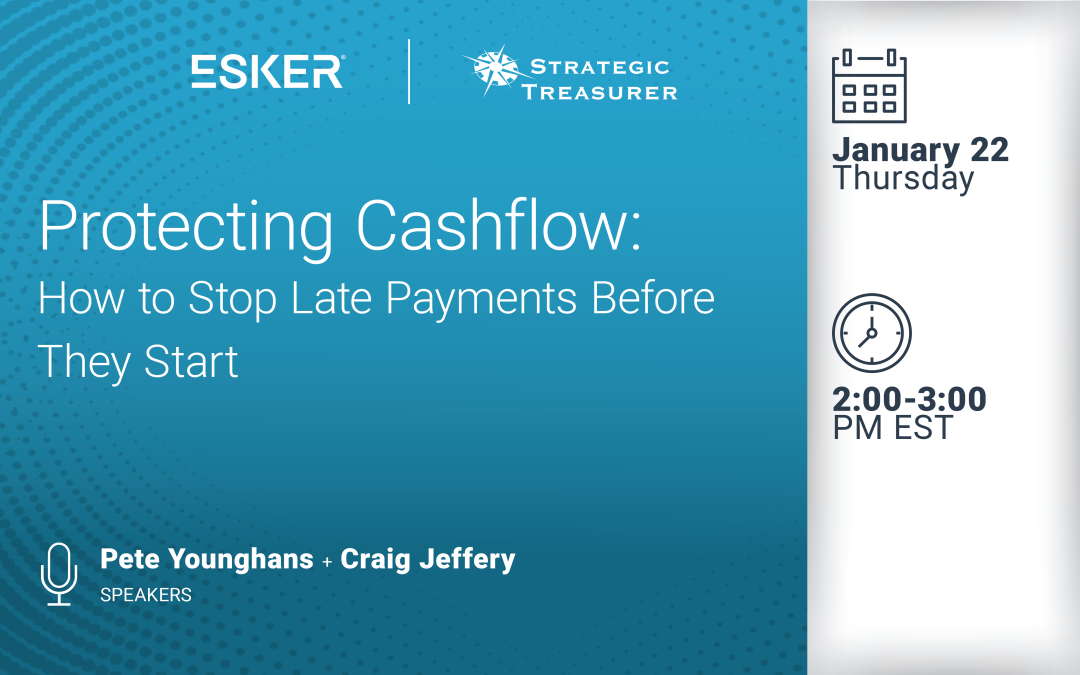
by Brian Weeks | Dec 17, 2025 | Registration, Webinars
Late payments remain a common challenge for treasury and AR teams, increasingly disrupting cashflow, forecasting, and working capital. This webinar will examine why overdue receivables are no longer just a downstream collections issue but an early warning signal of broader payment risk. Join Craig Jeffery of Strategic Treasurer and Pete Younghans of Esker as they explore how treasury and AR leaders can move from reactive collections to proactive cashflow protection, leveraging automation, analytics, and proactive workflows to identify payment risk sooner, reduce DSO, improve forecasting accuracy, and protect organizational liquidity.
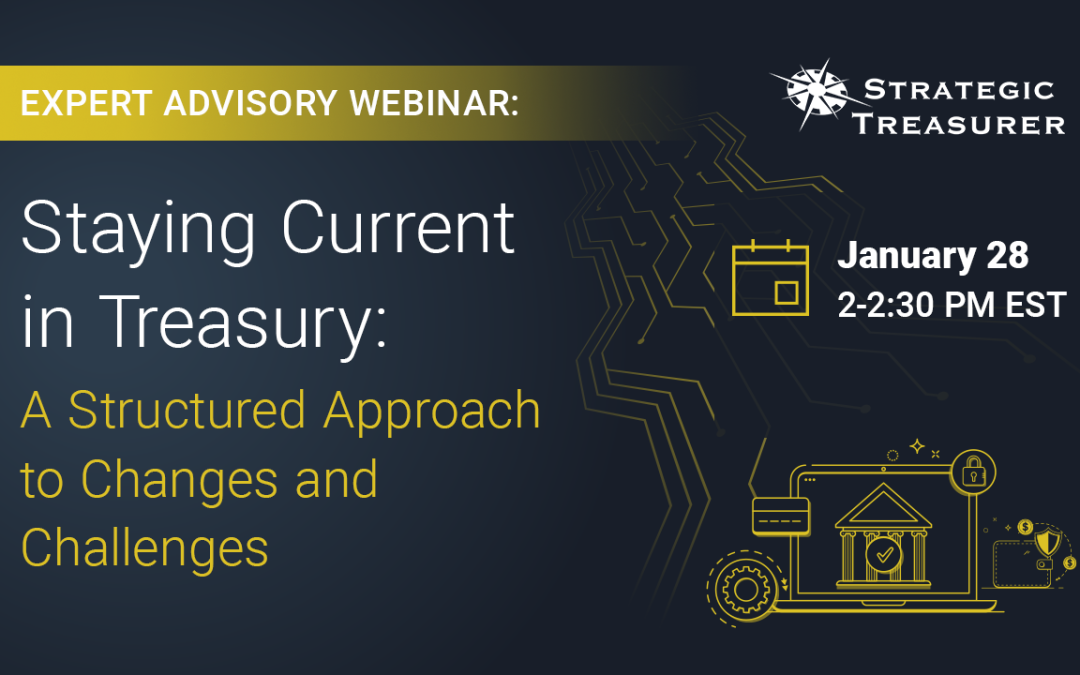
by Brian Weeks | Dec 17, 2025 | Registration, Webinars
The environment is constantly changing, and treasury can’t stand still. From shifting regulatory requirements to emerging technologies and new industry pressures, corporate teams are expected to stay informed and adapt, often with limited time and resources. This fast-paced webinar explores how organizations can build their treasury “radar” to identify changes and challenges as they develop. See how to monitor the environment and how partnering with an experienced treasury consultancy can better enable organizations to move from a reactive posture to a deliberately proactive approach.
We’ll discuss the value of structured, expert-led updates that condense complex developments into clear, actionable insights. Attendees will learn how quarterly or tri-annual advisory sessions can keep their teams aligned on regulatory shifts, technology advancements, market trends, and operational leading practices. Whether your goal is reducing risk, identifying new opportunities, or simply staying compliant, the right guidance ensures you’re maintaining your radar to be alerted early. Avoid being caught off-guard or unprepared. Join us on this 30-minute webinar to learn how systematic touchpoints can keep your organization in front of emerging changes.
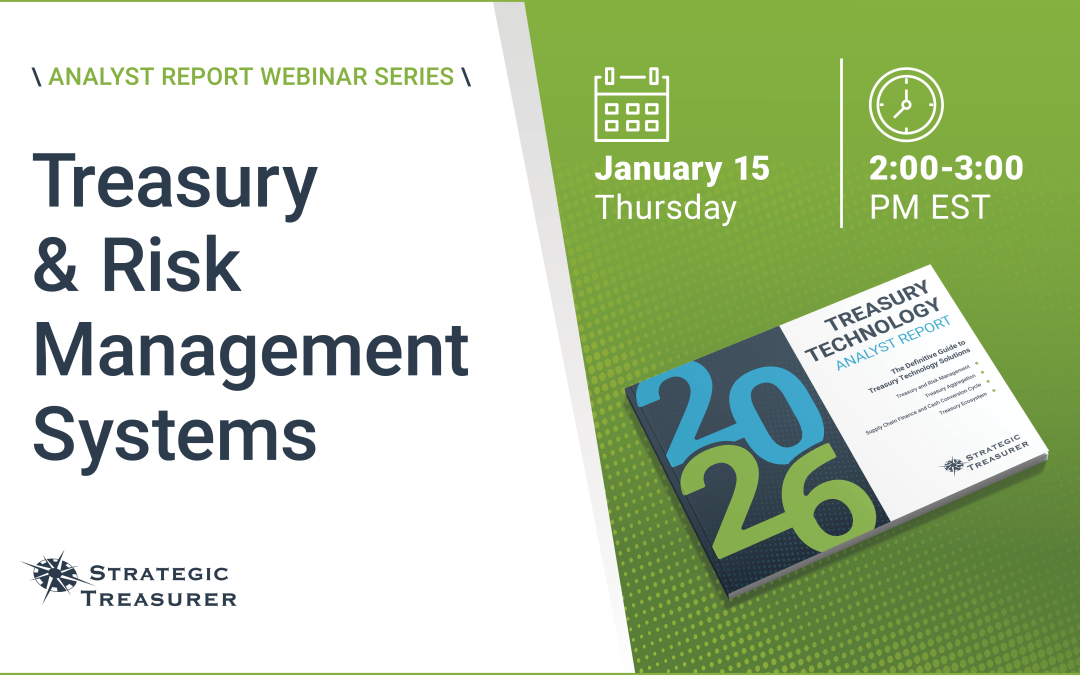
by Brian Weeks | Dec 8, 2025 | Registration, Webinars
As treasury’s core operational platform, the treasury management system (TMS) unifies key activities such as cash positioning, forecasting, payments, and risk oversight within a single platform. This webinar will examine the latest trends shaping the TMS market, including technology innovations, adoption drivers, and leading practices for evaluation and implementation. Join us to explore how developments in AI, automation, and integration are enhancing performance, visibility, and control, and gain insight into how a TMS can strengthen your organization’s efficiency and decision-making.
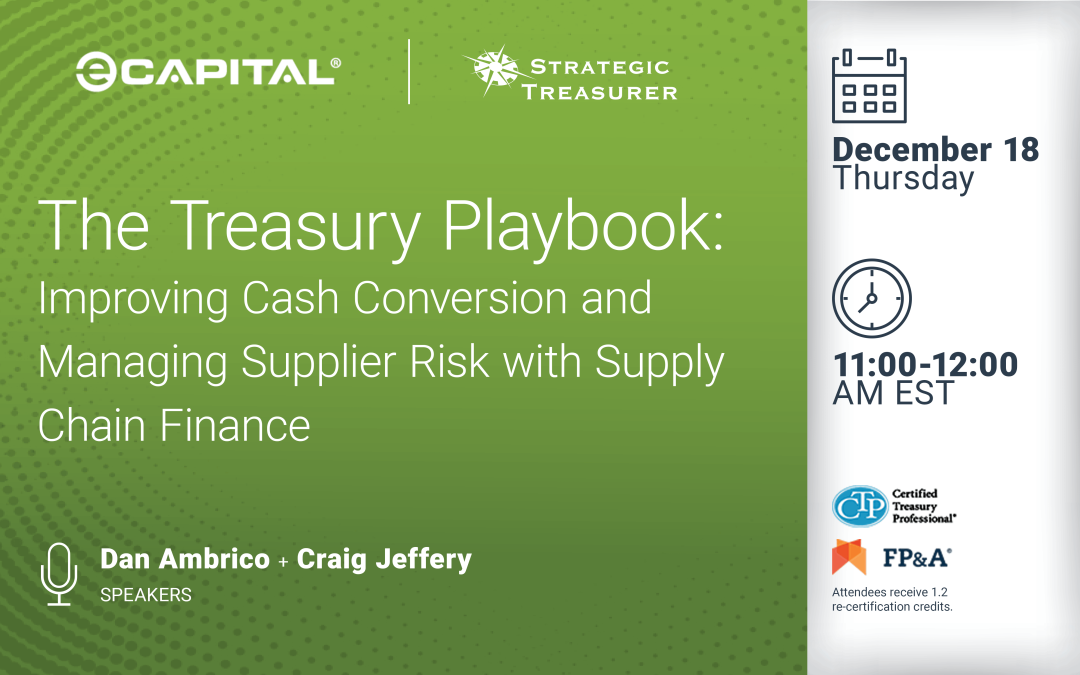
by Brian Weeks | Nov 24, 2025 | Replays, Webinars
Treasury teams are entering 2026 with increasing pressure on liquidity, credit availability, and supplier stability. In this fireside chat with eCapital, we will explore practical steps treasurers can take to accelerate cash conversion, strengthen supplier relationships, and maintain control in a shifting trade environment. The discussion will examine how tariffs and global trade policies are influencing working capital, and how a well-structured supply chain finance (SCF) program can enhance visibility, extend terms responsibly, and mitigate counterparty risk. We will also highlight how SCF and export-import finance (EXIM) can work together to support exporters and reduce trade exposure.
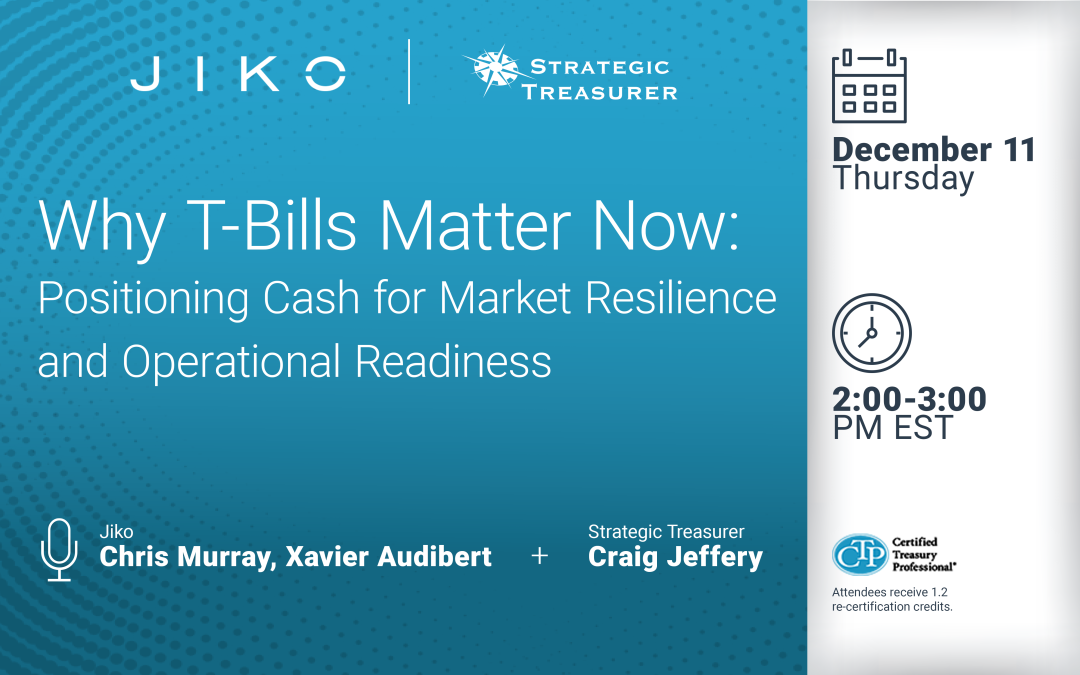
by Brian Weeks | Nov 17, 2025 | Replays, Webinars
Market disruptions, from the 2008 financial crisis to the regional bank failures of 2023, reveal how quickly liquidity risk can threaten access to cash for treasury teams overexposed to leverage when markets tighten. What are the tools and instruments available to treasury teams that mitigate these liquidity and counterparty risks?
This session will provide a practical briefing on how treasury teams can strengthen their 2026 cash strategies and will explore the role of direct ownership of U.S. Treasury bills. Learn about different vehicles for access, common value leaks that erode returns, and how technology and automation can simplify access, settlement, and liquidity oversight.
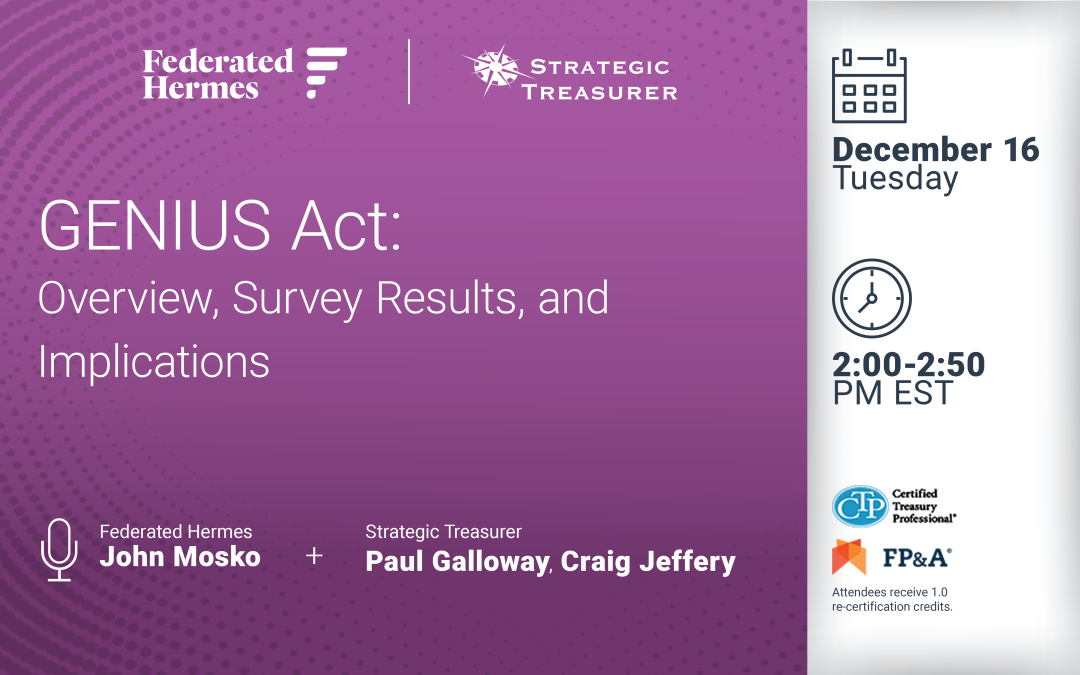
by Brian Weeks | Nov 10, 2025 | Replays, Webinars
Join us for an in-depth webinar examining the implications of the GENIUS Act for the treasury and finance community. This session will provide a comprehensive overview of the legislation, exploring its potential effects on innovation, payments modernization, data governance, and operational efficiency. Craig Jeffery and Paul Galloway will discuss key considerations for organizations as they assess readiness and compliance, exploring how the act could shape industry practices in the years ahead. The discussion will also incorporate insights from our recent GENIUS Act Survey, providing a data-driven look at current levels of awareness, anticipated challenges, and expected adoption rates.






